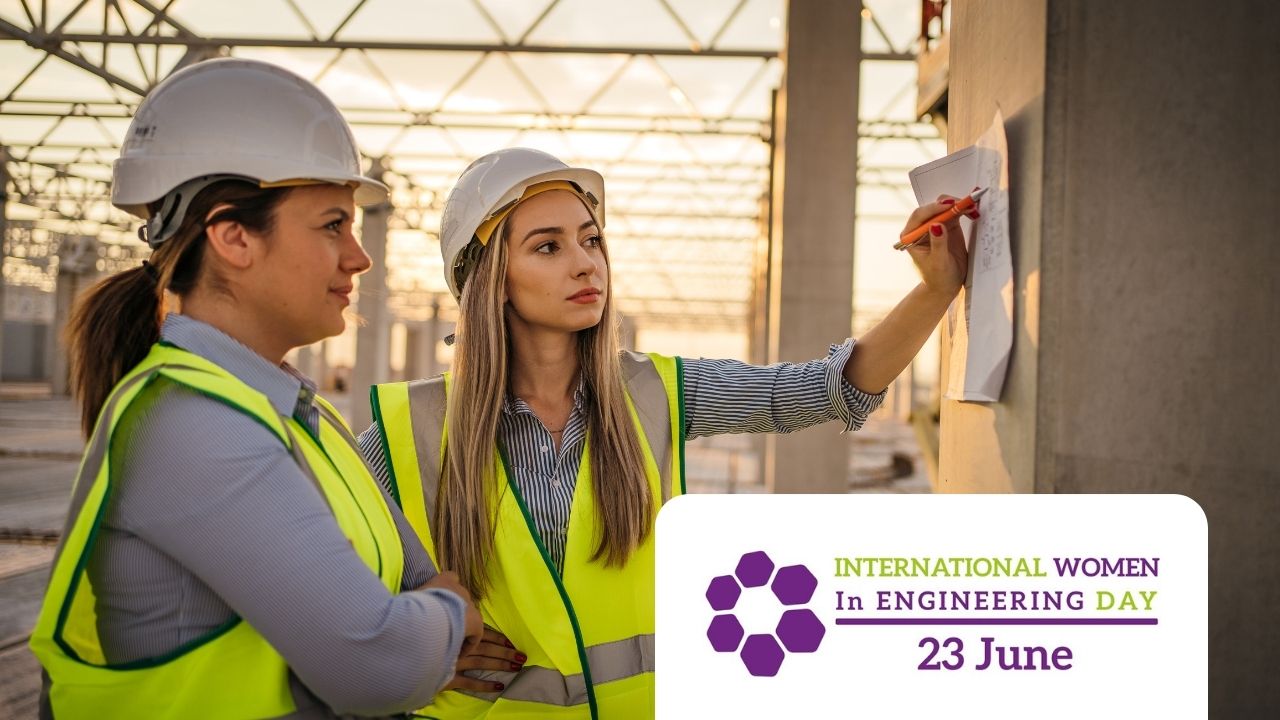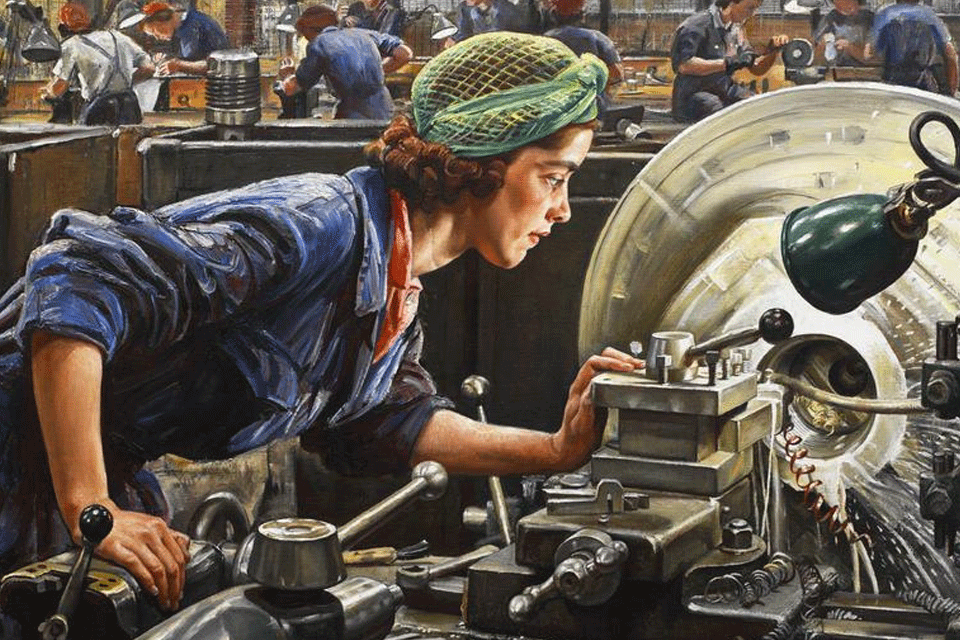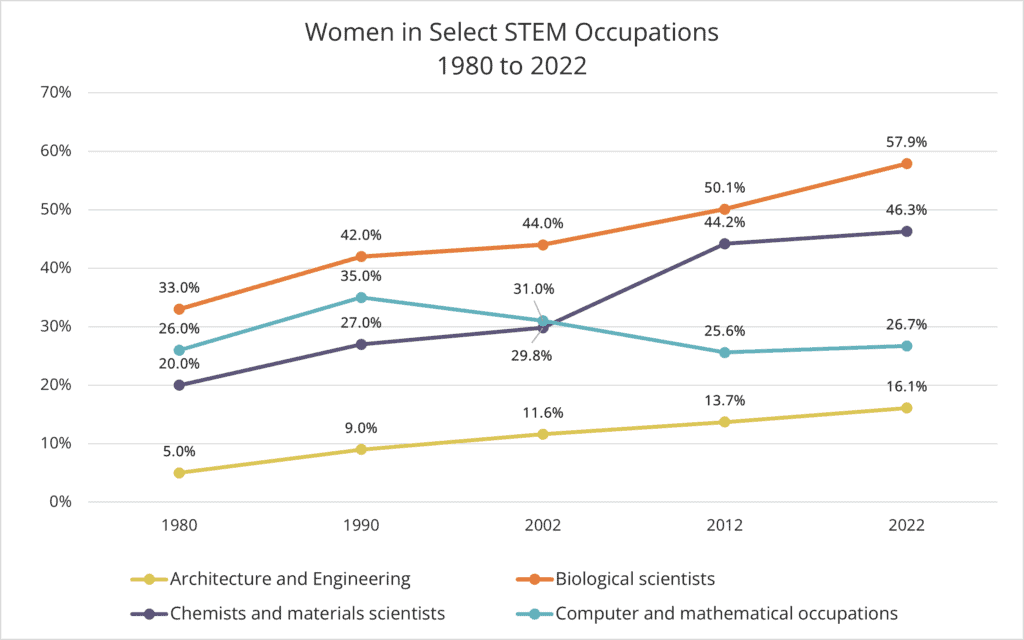Empowering Women in Engineering: Celebrating the Pioneering Minds of Our Time
19 Jun, 20236:53In honour of 'International Women in Engineering Day' we're exploring the history of women i...

In honour of 'International Women in Engineering Day' we're exploring the history of women in engineering, the current percentage of women in the field, the challenges they face, inspiring stories of female engineers who broke barriers, and how female engineers can enhance their careers.
The History of Women in Engineering: The First Female Engineers
Although engineering is still male-dominated, many female engineers have been responsible for innovations throughout history.
In the past, women with engineering skills often tried to gain recognition as inventors or mathematicians since engineering was not considered a formal profession. Ada Lovelace was recognised as such. She was a mathematician born in the 19th century and was the first person to identify the potential of the Analytical Engine as a device that could function like a computer. She is famously known as the first computer programmer, having accomplished this feat over a century before the computer’s recognised invention.
Women like Ada were often academically trained in mathematics or science but were not eligible to graduate with a degree. It wasn’t until much later that Elizabeth Bragg became the first female to earn a civil engineering degree. She graduated from the University of California, Berkeley, in 1876. She was followed by Julia Morgan in 1894, who graduated in mechanical engineering. Over in Europe, Rita de Morais Sarmento, from Portugal, received her civil engineering degree in 1896.
Edith Clarke is also credited with being one of the first female engineers. Born in 1883, she created the Clarke calculator for graphing electrical properties. She was also awarded the ‘Best Regional Paper’ prize, along with the ‘Best National Paper’ prize and ultimately became the first female professor of electrical engineering in America.
Fast forward to the 20th century, women began to enter the engineering field officially. During World War II, women were needed to fill engineering roles left vacant by men who were serving in the military. This opened opportunities for women in engineering, and many continued to work in the field after the war ended.

©Crown Copyright 2014 IWM - Dame Laura Knight depicts Ruby Loftus, ‘an outstanding factory worker’, screwing a Breech-ring at the Royal Ordinance Factory in Newport during World War II.
During this time, Thelma Estrin became a pioneer in computer science and biomedical engineering – she was one of the first to apply computer technology to healthcare and medical research. Eventually, she earned BSc, MSc and PhD degrees from the University of Wisconsin.
Despite this progress, women still faced discrimination and were often not taken seriously in the field. It took until the second-wave feminism movement in the 1960s and 1970s for the number of women in engineering programmes and jobs to increase. For example, in the 60’s The Massachusetts Institute of Technology (MIT) built their first women’s dormitory on campus and began enrolling more females into their engineering degrees. This was largely influenced by female faculty members Mildred Dresselhause and Shelia Widnall, who actively promoted women’s engineering education.
Towards the end of the 20th century, engineering programmes were more accessible to women. For example, between 1980 and 1994, the United States saw a significant increase of 45 percent in the number of engineering BA/BS degrees awarded to women.
But, despite the growing number of females in the sector, work still needs to be done to create equal opportunities.
Current State of Women in Engineering: What Percentage of Engineers are Female?
Although progress was made in the last century, women still make up a small percentage of engineers. According to the National Science Foundation, women make up only 13% of the engineering workforce in the United States. The Society of women engineers also cites the number of women in Engineering worldwide as just 16.1% and the number of STEM bachelor’s degrees awarded to women as 37.8%. These numbers have remained relatively stagnant over the past few decades, indicating that there is still work to be done to increase the number of women in engineering:

Source: Society of Women Engineers
Challenges Faced by Women in Engineering
So why do women make up a smaller percentage of engineers?
Women in engineering face several challenges, including:
- bias and discrimination – no matter how open-minded someone might think they are, research has shown how easy it is for our conscious and unconscious biases to impact our work environments.
- a lack of female role models makes it difficult for women to envision themselves in leadership positions in the field
- work-life balance issues – the Society of women engineers published a report in 2020 that stated women without managerial support for work-family balance were likely to leave the occupation.
- fewer professional development opportunities – bias, a lack of diverse role models and no support for work-life balance can result in fewer women being selected or putting themselves forward for promotions, career development opportunities or more responsibility.
These challenges influence and impact girls at school age, making creating a sustainable talent pipeline difficult. The women’s engineering society states in a report from 2018 that boys have more positive views of engineering than girls, even in primary school, and this doesn’t improve as they get older - only 25.4% of girls aged 16-18 would consider a career in engineering, compared to 51.9% of boys.
Inspiring Stories of Female Engineers Who Broke Barriers
Despite the challenges faced, there are many inspiring stories of female engineers who have broken barriers and achieved great success in the field. One such example is Lillian Gilbreth, who was the first woman to earn a PhD in engineering from the University of California, Berkeley in 1914. She went on to become a pioneering industrial engineer and the mother of 12 children.
Another inspiring story is that of Ellen Ochoa, who became the first Hispanic woman to go to space in 1993. Ochoa is also a talented engineer and has received numerous awards for her work.
Marissa Mayer has achieved significant success in business and is considered one of the most influential women in science and engineering today. She made history by becoming the first female engineer at Google and later became the first female CEO of Yahoo, a Fortune 500 company.
Patricia Bath, a pioneering African American woman, was the first female doctor to obtain a medical patent. Her innovative technology revolutionised the treatment and elimination of cataracts, and she was also the first African American to complete an ophthalmology residency. Her dedication and brilliance not only restored the vision of patients who had been blind for decades but also contributed significantly to the advancement of African American rights.
Tips for Women Pursuing a Career in Engineering
If you're a woman interested in pursuing a career in engineering, there are a few things you can do to increase your chances of success. First and foremost, find female role models in the field who can offer you guidance and support. Look for networking opportunities, such as conferences and events, and join organisations dedicated to supporting women in engineering.
It's also important to develop strong technical skills and stay current on the latest technologies and trends in the field. Consider pursuing a graduate degree or certification to increase your knowledge and expertise.
Finally, don't be afraid to advocate for yourself and your work. Speak up in meetings, ask for credit when it's due, and promote your achievements.
Women in Engineering Conferences and Events
Many conferences and events are specifically designed to support and empower women in engineering. One such event is the Society of Women Engineers' annual conference, which brings together women from all areas of the field to network and share their experiences. Other events include the Women in Engineering annual conference and the Women Techmakers Summit.
Attending these events can be a great way for women in engineering to connect with others in the field, learn about new technologies and trends, and gain inspiration and support.
Organisations Supporting Women in Engineering
There are also several organisations dedicated to supporting and empowering women in engineering. The Society of Women Engineers is one such organisation offering scholarships, networking opportunities, and resources for women in the field. Other organisations include Women in Engineering ProActive Network (WEPAN), Women in Engineering and the National Society of Black Engineers.
Joining these organisations can be a great way for women in engineering to connect with others in the field, gain access to resources and support, and advocate for change.
The Future of Women in Engineering
Despite the challenges faced by women in engineering, the future looks bright. Diversity in the workplace is proven to bring various perspectives, experiences, and ideas to the table. This can lead to increased innovation, creativity, and problem-solving in companies. This has led to initiatives across the globe to increase the number of women in the field, including outreach programmes to young girls and increased support for women in college engineering programmes.
Additionally, the growing demand for engineers in fields such as renewable energy, healthcare, and biotechnology means that there will be more opportunities for women in the field in the coming years.
In conclusion, women have made great strides in the field of engineering over the past century, but there is still work to be done to increase the number of women in the field and support their success. By joining together, advocating for change, and supporting each other's achievements, we can create a more inclusive and empowering future for women in engineering.
NES Fircroft is committed to diversity
With over 80 offices around the globe, NES Fircroft has a diverse workforce, and we recognise, respect and value the diverse nature of the wider society in which we operate. Learn more about how we’re creating a more inclusive future.










